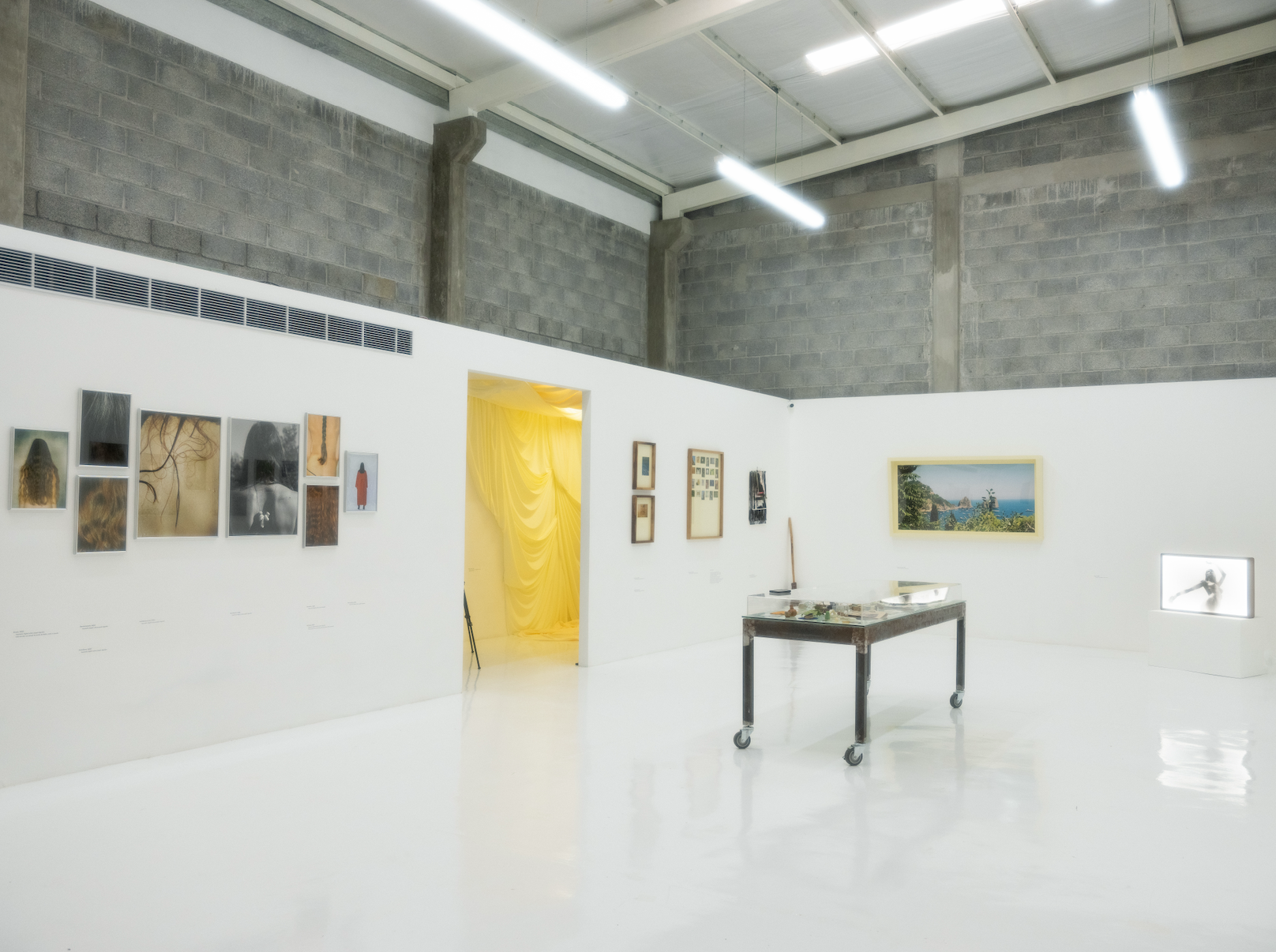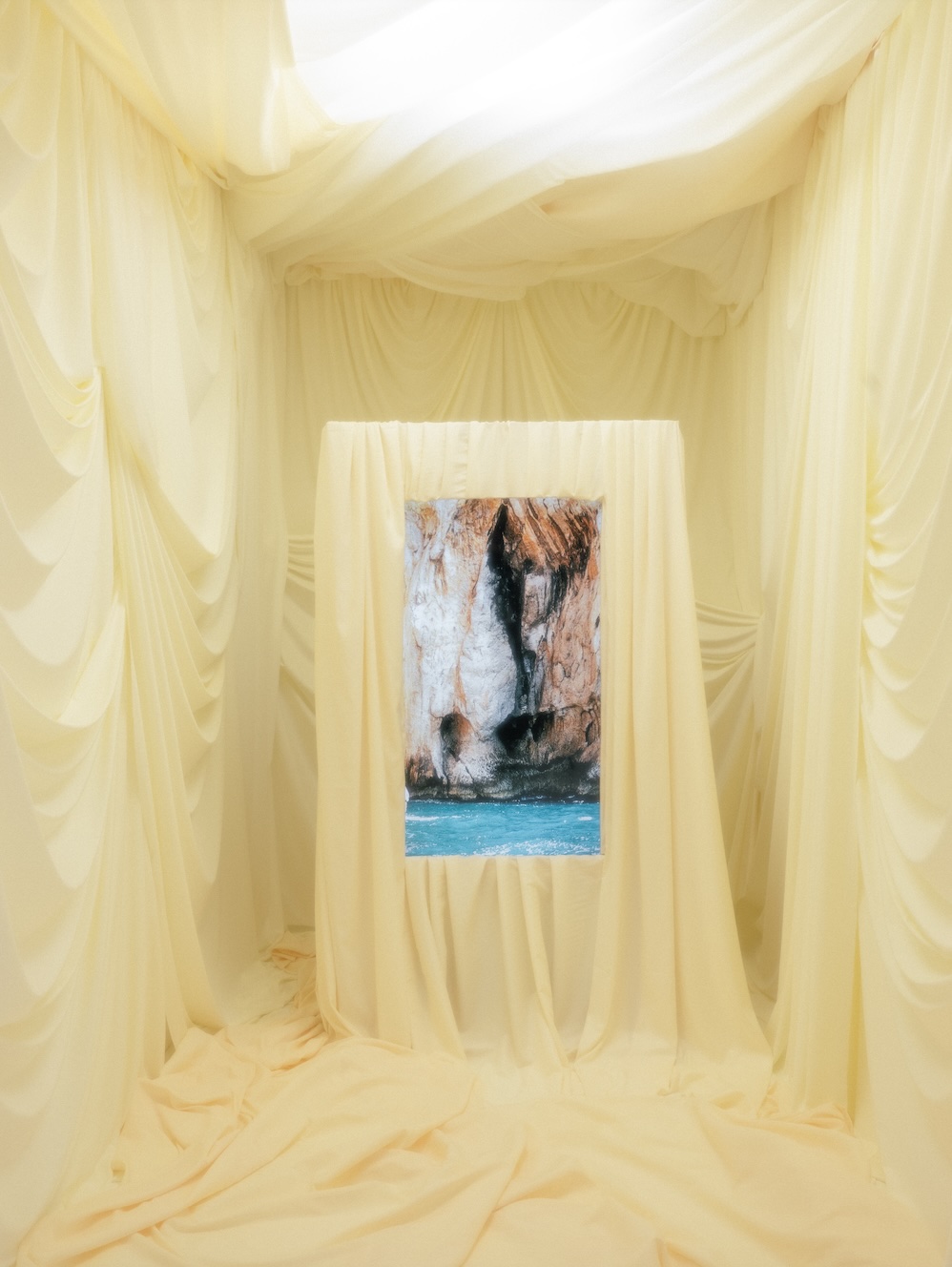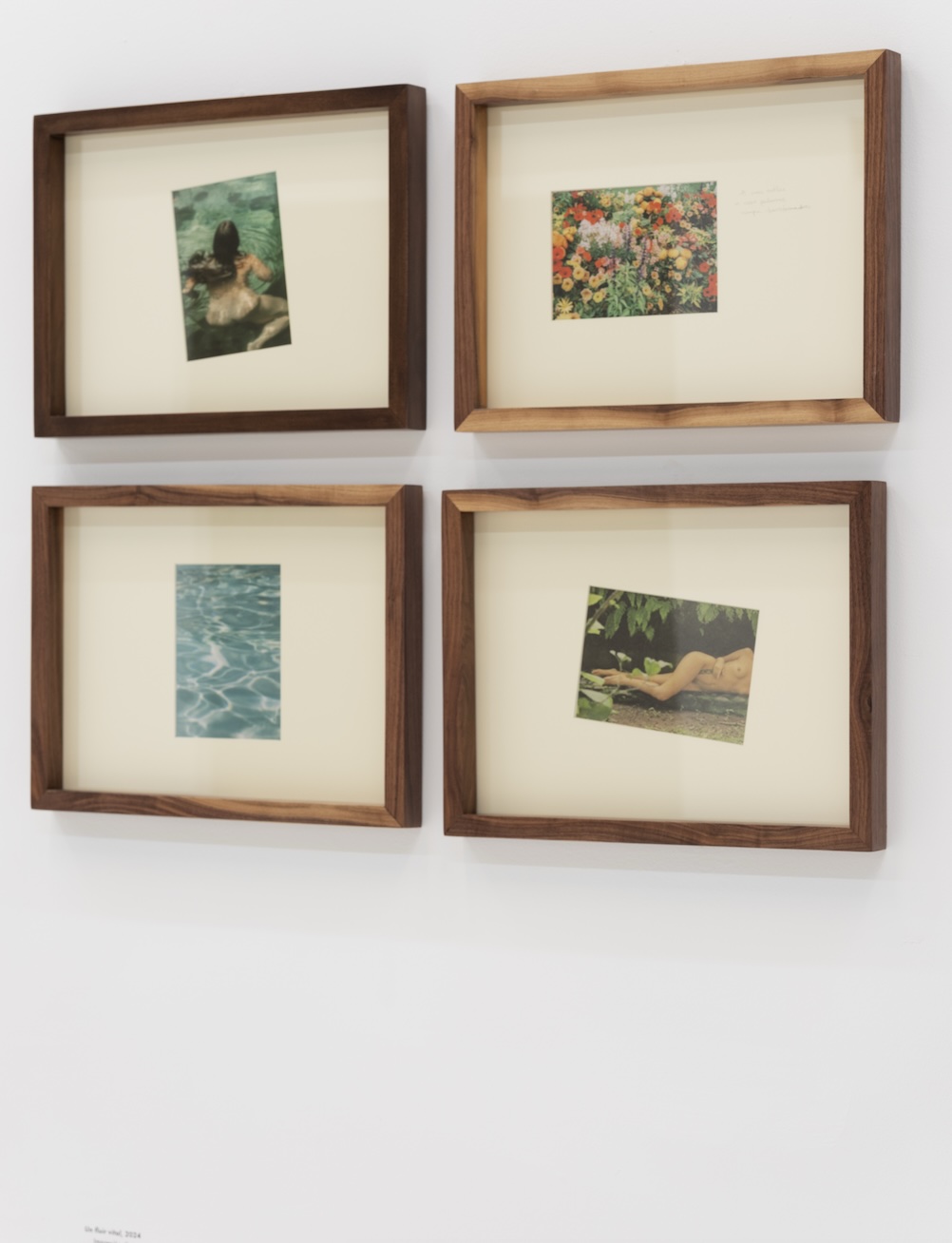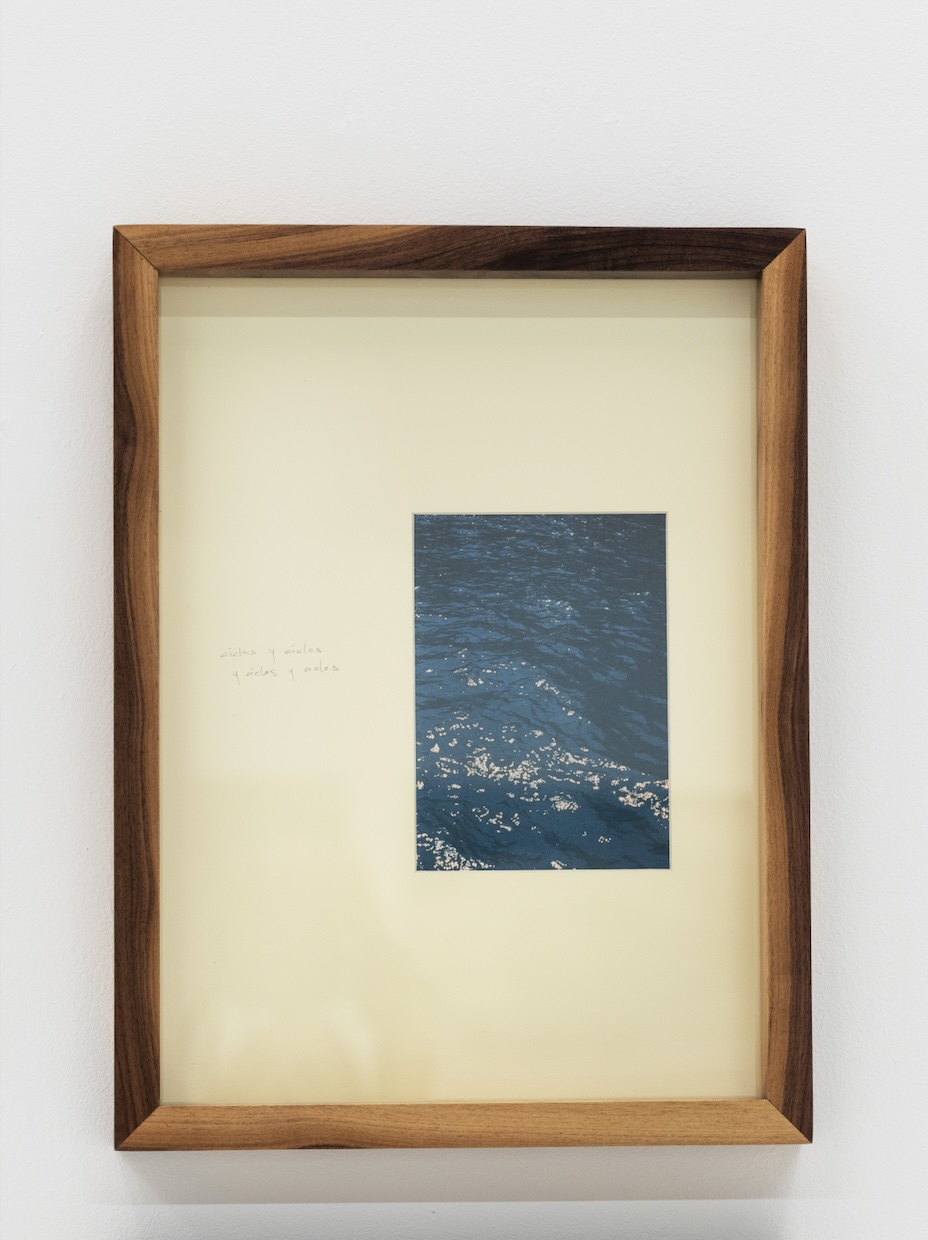
Review
Relational, Material, and Corporeal Records: On 'Hembra' by Mariana García at Galería Gotxikoa
by Aurora Marie Leyva
Reading time
4 min
I visited Hembra by Mariana García at Galería Gotxikoa, an intimate exhibition where the artist invites us into her biological processes and her relationship with Mother Earth through photographic archives in various formats, personal texts, and familiar objects.
I began reading the exhibition from left to right. A poetic text written by Mariana, "Texto Madre" (Mother Text) provided a heartfelt introduction, paying homage to Mother Earth. Next, I encountered eight small and medium-format photographs, some in black and white, others in color, focusing on hair and portraits of women turned away. The emphasis on details of the female body stood out.

I entered a cozy, small room covered in yellow curtain-like fabrics. Inside, a screen displayed a series of portraits and travel photographs by Mariana, like a visual journal.
Returning to the main hall, I observed images related to motherhood and cycles. I found a collage of small-format photographs featuring various elements: a close-up of skin, portraits of a pregnant woman, a snail, the sea, a field of flowers, a tree, and mythological sculptures. Below the photographs was a text written by Mariana, emphasizing motherhood and existence.

The photographic series trace subtle details of the female body, journals of vulnerable processes, physical and personal journeys. Layered photographs invited viewers to sift through each print—one even bearing the phrase "sí tocar"[1]—and engage more intimately with the pieces, which we typically view from a distance. It felt like a cartography of internal and external encounters, echoing Deleuze and Guattari's idea: make the map, not the tracing—an open, connectable, tangible map.²
At the center of the room, I found a table displaying archival materials and family objects that symbolize light and darkness for the artist. A journal with a poem, two instant black-and-white photographs, a recipe for cilantro dressing, newspaper clippings, photographs taken and altered by her grandmother (also a photographer), and even items representing biological and emotional processes, like an ultrasound. There were also bird nests she had found during her daily travels, as well as various tree leaves connected to her sister, a taxidermist. I also saw drawings and photographs of her daughter.
The table held Mariana's personal history and relationships. It felt as if I were observing a family tree, with its roots and branches on display. Tangible carriers of memories, moments where we embrace the roots of those trees and view microhistories as affective territories through personal objects.

I continued encountering portraits in various formats, including a lightbox. I noticed analogies between the natural and the corporeal, with some prints accompanied by handwritten texts. One photograph I particularly connected with was an image of the sea from one of Mariana’s trips, with the words “and cycles and cycles and cycles and cycles” inscribed in pencil.
Mariana introduces the body as part of an experience that transcends photographic language, inviting us to consider perception and sensation as modes of cognition and meaning-making.³ In her text, she writes, “feminine power is navigated with grace and in waves, reminding us of being and feeling...,” highlighting her relationship with natural elements that affect her biological cycles: the passage of time, seasons, the water cycle, mitosis, the cycle of life. It reminds me of my own connection to these cycles: the luteal, menstrual, follicular, and ovulatory phases. Like gazing at the sky and noticing the moon in its waning phase.

Cycles flow through our bodies and surroundings. Observing them gives us the space to reflect on our vulnerability to them. What happens when a cycle is broken? What if it changes? What happens if I decide to break it? Are we bound to these cycles, or to what extent can we alter them?
Translated to English by Luis Sokol
1: Touching allowed.
2: Deleuze, G., & Guattari, F. (2004). Micropolítica: Cartografías del deseo (M. Á. Ramos, Trans.). Ediciones Siglo XXI. (Trabajo original publicado en 1988)
3: Depetris Chauvin, I. 2019. Geografías afectivas. Desplazamientos, prácticas espaciales y formas de estar juntos en el cine de Argentina, Chile y Brasil (2002-2017). Pp. 1-22. Pittsburgh, Estados Unidos: Latin America Research Commons. DOI: https://10.25154/book3. Licencia: CC BY-NC 4.0
Published on January 5 2025